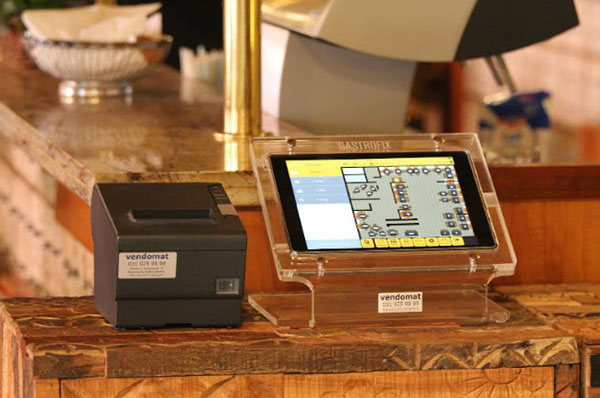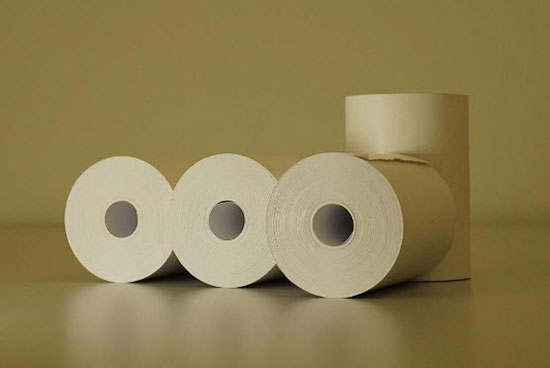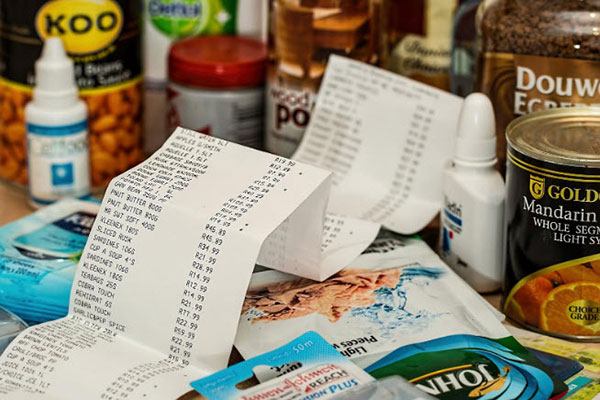How Thermal Printers Work: Low Maintenance Printing Without Ink or Toner
2022-09-19 | By Maker.io Staff
Thermal printers have been a common sight in many applications for decades. These devices, often also referred to as receipt printers, are present in practically every cash register system, ATM, ticket kiosk, and cash-deposit machine. In addition, many industrial and medical devices use receipt printers to let operators print out measured values or self-test results. Finally, these devices are helpful in many other applications that require a maintenance-free printer in a confined space.
This article introduces you to the basics of thermal printers, how these devices function, and what other benefits and drawbacks you should consider before using them in your projects.
 Receipt printers are a common sight in many commercial buildings, such as banks, grocery stores, bars, and restaurants.
Receipt printers are a common sight in many commercial buildings, such as banks, grocery stores, bars, and restaurants.
How do Thermal Printers Work?
Typical inkjet printers found across homes and smaller offices draw a piece of paper through the device and then apply one of four colors in layers to produce the desired print by mixing the inks on the paper. This process takes time, and the moving print head requires the entire printer to be relatively large and bulky. Other printers commonly used in more professional settings, for example, large copiers that use toner and heat, require even more space.
In contrast, thermal printers do not apply ink or toner to the paper. Instead, they use special paper coated with a heat-sensitive layer that changes color as soon as the paper gets close to a heat source.
 Thermal printers require the use of specialized paper that changes color when exposed to heat.
Thermal printers require the use of specialized paper that changes color when exposed to heat.
An internal motor pulls the paper through a feeding slot and onto a spring-loaded roller. The roller ensures that the paper makes good contact with the thermal print head, which typically comprises hundreds of electrically controlled, highly sensitive, and small heating elements. Due to their minuscule size, these elements can warm up and cool down almost instantly, making the print process very fast.
The number of these heating elements determines the resolution of the final print. Typical small receipt printers can print a few hundred pixels per line. Standard thermal printer paper is about 2.25 inches wide and around 50 feet long, and you can typically find it priced reasonably. However, you can also buy standard US letter-size as well as DIN A4 printers and paper.
The Benefits of Using a Thermal Printer
Some of the mentioned benefits include fast print speeds, maintenance-free operation, and no need to buy ink. In addition, thermal printing paper is low cost and readily available.
Thermal printers do not have many moving parts or require sophisticated control hardware. Therefore, they can be much more compact, less expensive, and more rugged than other types of printers. Making them perfect for mobile applications that require a printer, for example, in law enforcement and emergency medical services.
Drawbacks of Thermal Printers
Unfortunately, using heat as a primary printing method means that these printers are often not very energy efficient and typically require a powerful external power supply. Therefore, using a development board to power such a printer directly is usually insufficient. However, many types of batteries, such as Li-Ion packs, can deliver enough power to run printers out in the field.
These printers also typically have a very limited resolution, especially the more cost-effective variants. Therefore, they are perfect for printing receipts and simple graphs, barcodes, and QR codes. However, they are often not good enough for printing more complex graphics, like photographs. In addition, the paper is typically monochrome and usually only black and white. However, other colors are available, and some devices support making dual-color prints using paper that contains two layers of thermal coating.
Finally, the printed receipts are very sensitive to heat and UV exposure. Applying heat to thermal printer paper makes it turn dark. Leaving it in the sun or other bright light sources for prolonged periods makes the printed content fade.
Summary
Thermal printers are common in many machines, restaurants, stores, and medical facilities. Instead of applying ink to ordinary paper, these machines require special paper coated with a heat-sensitive layer. This layer changes color once exposed to heat.
 Store receipts are typically created using a thermal printer. Stock Photo; Free for commercial use; No attribution required. Source: https://pixabay.com/photos/shopping-spending-till-slip-879498/
Store receipts are typically created using a thermal printer. Stock Photo; Free for commercial use; No attribution required. Source: https://pixabay.com/photos/shopping-spending-till-slip-879498/
Internally, thermal printers are relatively simple machines. They contain a motor, a spring-loaded roller, a heating element, and controlling circuitry. The heating element comprises hundreds of small heater units that can heat up and cool down rapidly.
Therefore, receipt printers can achieve high print speeds. However, they can typically only produce monochrome output. In addition, their simple internal structure allows them to be cost-effective and small devices, making them a good choice for mobile applications that require a printer.
Have questions or comments? Continue the conversation on TechForum, DigiKey's online community and technical resource.







 中国
中国